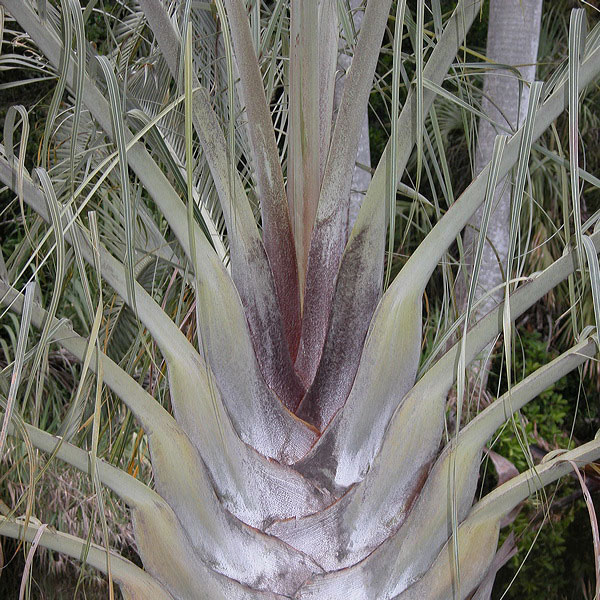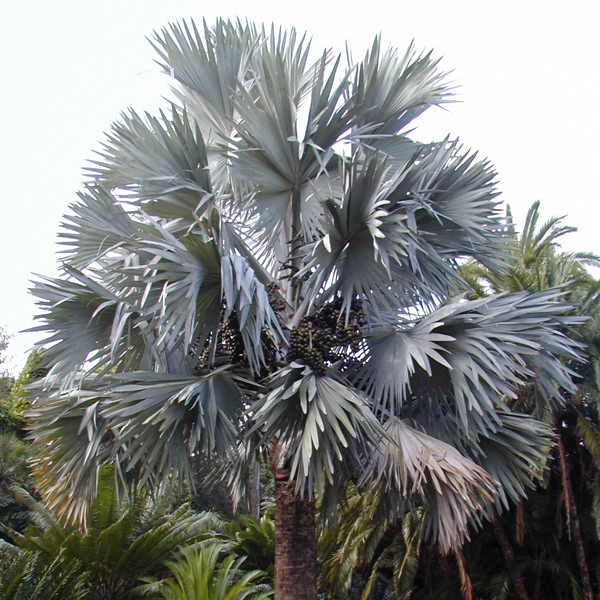-

Dypsis decaryi is commonly cultivated in Hawaii. Its 3-ranked leaves and regularly arranged leaflets makes it readily identifiable in the landscape.
habit -

Bactris gasipaes (peach palm) is an important crop in many tropical countries, cultivated for both the edible fruit (cooked to make a starchy snack) and the palm heart which has the potential to be sustainably harvested because, unlike solitary palms, this multi-stemmed palm is…
stems -

Bismarckia nobilis is a solitary palm with waxy blue-green costapalmate leaves and feathery, cinnamon-colored scales. It is a beautiful palm that can be a striking, but eventually very large, addition to the landscape.
bismarck palm in the landscape
Identifying Commonly Cultivated Palms
Palms are one of the most easily recognizable plant groups. Palms and their products are an integral part of human culture in warmer regions of the globe. They are commonly cultivated as ornamentals, and many palms have been used as crop plants for centuries, providing important sources of food and a variety of other products. As such, palms are one of the most economically important groups of plants. This tool is designed to help users identify cultivated palms; in many instances to species level. The ability to identify a palm host is an important aid to pest and disease identification, as many diseases and pests may be host-specific. The tool features a variety of resources to aid the user in the identification of cultivated palms, including fact sheets, a key, an image gallery, and helpful morphology diagrams. The tool covers palms that are commonly cultivated in the United States and the Caribbean, and all features in the key can be used with the naked eye or a hand lens.


